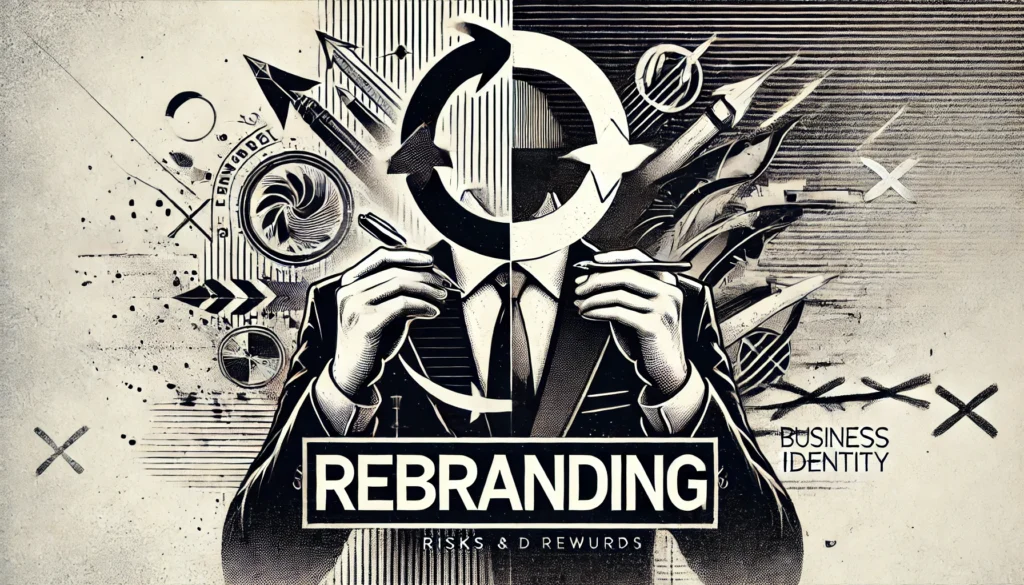
More of A Reader?
Read Our Blog Our This Topic Below!

Rebranding is a powerful marketing strategy, but it needs to be approached with care and purpose. In essence, rebranding involves making changes to your brand identity—this could be as small as updating a logo or as major as completely overhauling your company’s name, mission, or target audience. The key is to know when it’s necessary and how to do it effectively.
What Is A Rebrand?
Rebranding can take many forms, from a simple facelift to a total transformation. For example, global companies like Pepsi have reworked their logos countless times over the years, evolving to stay fresh and relevant without abandoning their core identity. These smaller adjustments help keep the brand contemporary while preserving the decades of brand equity they’ve built up.
On the other end of the spectrum, there are examples of total rebrands, such as when Twitter rebranded to “X.” This wasn’t just a new logo or a minor tweak; it was a complete departure from everything the brand once stood for. Twitter, as a brand, had a global presence and strong recognition, making the name synonymous with social media and real-time conversation. By changing its name to “X” and shifting its identity, Twitter effectively erased years of branding, leading many to believe it could go down as one of the worst rebrands in history.
Why Rebranding Is a Risky Move
The case of Twitter illustrates a critical mistake in rebranding: burning down all of the recognition you’ve worked hard to build. While some level of change may be necessary to refresh or reposition your company, erasing your identity can confuse and alienate loyal customers. Twitter’s rebranding didn’t just change a logo—it threw away over a decade of brand equity, recognition, and trust. This could severely impact its long-term success, as people may struggle to form the same connection with “X” that they had with Twitter.
When to Rebrand
Rebranding can be an excellent move under the right circumstances, such as:
Outdated Branding: If your logo or brand messaging looks outdated, it might be time for a refresh. Even something as simple as changing the font, colors, or modernizing your logo can make a huge difference.
Merger or Acquisition: When companies merge, they often combine identities to reflect their new direction. This can help communicate a stronger, unified message.
New Target Audience: If your business is pivoting to reach a new demographic, your brand may need to change as well. This could involve everything from colors and messaging to product offerings and tone of voice.
Reputation Management: If your brand has suffered a significant PR crisis, rebranding might help distance the company from the negative press and present a fresh face to the public.
Expanding Beyond Your Original Market: If your company started small but is growing into new industries or markets, rebranding can help convey your new scope and vision.
Key Considerations for a Successful Rebrand
While a rebrand can bring new life to a company, it must be done with strategic intent. Here are some key tips for ensuring your rebrand strengthens rather than weakens your identity:
Keep Core Elements: Don’t completely discard your existing branding if it’s working for you. Just like Pepsi, make small adjustments to keep things fresh without losing what makes your brand recognizable.
Maintain Brand Equity: The years of trust and recognition that have built up in your old brand should still be a part of your new identity. Erasing that history could be detrimental.
Communicate Clearly: Whether you’re updating a logo or completely changing your name, be transparent with your audience. Let them know why the change is happening and how it will benefit them.
Test First: Before going all in on a new brand identity, test it on a smaller scale. This can help you gauge customer reactions and avoid any major pitfalls.
The Takeaway
Rebranding can be a fantastic way to modernize your business or realign with new goals, but it must be done thoughtfully. Whether you’re planning a subtle logo refresh or a complete identity overhaul, ensure that you’re not abandoning the foundation you’ve built. Companies like Pepsi have shown how to successfully evolve without losing their essence, while Twitter’s transition to “X” serves as a cautionary tale of what can go wrong when brand identity is thrown away entirely.
The key to a successful rebrand is balance—change enough to stay relevant, but not so much that you lose the heart of what made your brand special in the first place.





